Last updated on May 28th, 2024 at 10:43
Buying coffee beans can be complicated, every bit as complicated as buying a good wine and just like a good wine, not all coffee beans are the same. A question we are often asked on our Facebook/Meta page is “Are espresso beans different from other coffee beans?”
The answer is more complicated than you would expect, and I have dedicated this article to explaining why.
The simple and short answer is yes, espresso beans are different from regular coffee beans as there is a specific type of coffee bean that you will need to brew a top quality shot of espresso and one that has all the associated characteristics and flavor profile with a rich crema on top.
To be super clear, any green coffee bean can be taken, processed and roasted to a level in which they can be used for brewing a shot of espresso and thus there is only one main difference, their roast level.
Keep reading as we dig down on the topic of espresso beans and why they are slightly different.
Are Espresso Beans And Coffee Beans The Same?
Table Of Contents
- 1 Are Espresso Beans And Coffee Beans The Same?
- 2 What Is Espresso?
- 3 What Makes An Espresso Different From Other Coffee Drinks?
- 4 The Difference Between An Espresso And Other Popular Coffee Drinks
- 5 Can You Make An Espresso With Regular Coffee Beans?
- 6 Do Espresso Beans Have More Caffeine?
- 7 Frequently Asked Questions About Are Espresso Beans Different?
- 7.1 Can You Use Regular Coffee Beans For Espresso?
- 7.2 Are Espresso Beans Coffee Beans?
- 7.3 What Is The Difference Between Espresso Beans?
- 7.4 Can You Use Any Whole Bean For Espresso?
- 7.5 Are Espresso Beans Different Than Coffee Beans?
- 7.6 Can You Use Any Beans As Espresso Beans?
- 7.7 Does The Type Of Bean Matter For Espresso?
- 7.8 Why Can You Eat Espresso Beans But Not Coffee Beans?
- 8 Frappé-Ing It All Up – Are Espresso Beans Different?
No, but, yes,…I’ll explain.
Espresso beans are simply coffee beans that have been roasted to a different level to help you to produce this specific type of coffee drink. They have been roasted at a higher temperature to help migrate the coffee oils to the exterior of the coffee beans.
This higher roast level is called an espresso roast. The oily beans help you to produce that rich thick crema on top.
You can roast any coffee bean from any location to the required roast level to make a great espresso. We can safely say from this point of view that espresso beans are the same as all other beans, be they Robusta, Liberica, Excelsa or Arabica beans from any where in the world.
But,
you can’t simply just use any beans that you want. They must be roasted to an espresso roast or an Italian roast as it is more commonly known. They are ultimately speaking, a coffee bean of a specific roast profile.
Technically you can use a medium-dark roast to make an espresso, but when you are moving down to the lighter roaster from a dark roast you will get less little oil on the surface of your coffee beans and thus a reduction of the quality of the crema on top.
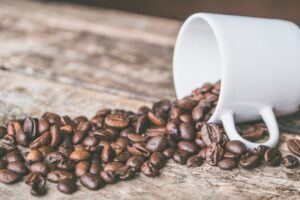
Read: Cold brew proportions
What Is Espresso?
An espresso is a strong, focused and concentrated coffee that is brewed with fresh very finely-ground coffee beans of a dark roast. The grind size is typically 200 microns to 250 microns and very powder like.
It is brewed with hot water of 92C To 96C (195F to 205F) and a pressure of 9 bar (130 PSI) for a brewing time of 25 seconds to 30 seconds (+/-5 seconds) and served in a demitasse cup. The result of this is an all too familiar espresso shot.
All of these elements including the freshness of your beans are important to achieve the rich crema on top.

What Makes An Espresso Different From Other Coffee Drinks?
There are a few, okay, more than a few factors that make a shot of espresso different from other coffee drinks.
Let’s talk about those.
The Beans And The Roast Profile
As we have already touched on the roast profile of an espresso beans are different from what you would use for other coffee drinks like a drip coffee or siphon coffee for example.
The light roasts, blond roasts, medium, medium-dark roasts won’t produce a full body and deep flavor that you would expect. Also, due to the reduction in the amount of oil on the surface will result in a reduction in the quality of the crema.
Espresso beans, which is the roast level you should be using, are roasted at a higher temperature and beyond the second crack. Their flavor profile is different, heavier body and darker, smoky flavor and less acidic.
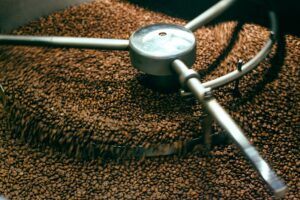
Grind Size
The grind size for making an espresso is much finer which creates a larger surface area as a result more coffee is in contact with the coffee grounds which creates a very strong coffee.
The grind size is 200 microns to 250 microns, which is a sand-like size and texture. Surprisingly it is not the finest grind size used in coffee brewing as a Turkish coffee uses a flour like grind size of 50 microns to 100 microns.
It is due to this very fine grind size that the period of time required to brew a cup of espresso is very short.
Brewing Technique
The brewing technique, similar to a drip coffee, French press, percolator and siphon coffee, needs its one piece of brewing equipment – an espresso machine. You simply cannot brew an espresso shot in a regular coffee pot, moka pot or even an Aeropress – even though some claim that you can.
These methods claim that you can. To be fair, with an Aeropress and a moka pot you can get a good espresso that can form the base for the milk based espresso drinks like a latte, cortado, cappuccino, flat white, mocha and the many others.
These brewing methods do not produce enough pressure to ensure that you will get a rich crema on top, and thus you need an espresso machine for that.
The good news is that modern home espresso machines are every bit as good as their professional counterparts that you see in coffee shops.
The Coffee To Water Ratio
The concentration of coffee is much more focused than a cup of drip coffee and any other coffee (except a ristretto (which is a more focused espresso)). The coffee to water ratio is typically 1:1.5 where the water content is 1.5x the coffee content in terms of weight.
A ristretto is a 1:1 ratio.
The Water Pressure
An espresso is the only coffee that requires a specific water pressure to extract the compounds in the coffee. The water pressure needed to make a good espresso is 130 PSI or 9 Bar.
Without this water pressure you won’t get that rich crema – which also needs to have fresh oily beans to work well.
The Rich Crema On Top
No other cup of coffee has that distinctive and delicious rich crema on top.
The Flavor Profile
Due to the fact that an espresso is ground, roasted and brewed in a very different manner, it is a cup of coffee that has a very different flavor profile than other coffee drinks. Due to the roasting process, you can expect a richer coffee flavor.
Its flavor is richer, fuller, and less acidic. It has more caffeine per ounce than any other coffee, but in contrary to popular belief it does not have more caffeine in total than other cups of coffee.
The Difference Between An Espresso And Other Popular Coffee Drinks
Let’s now talk about the differences between an espresso and other popular coffee drinks.
An Espresso Vs An Americano
An espresso shot forms the base of an espresso and has hot water added in equal proportions or more. Some consider it to be a diluted espresso.
The espresso shot is usually first poured, and then the water is added. The flavor is softer, smoother and has a reduced, thinner body.
An Espresso Vs Cappuccino
A cappuccino really has two ways of being brewed: bone dry or wet cappuccino. The difference between the two is the use of steamed milk.
A ratio of 1:1:1 of an espresso, steamed milk and microfoam is used and then topped with a sprinkling of cocoa powder.
An espresso, as you can see, is very different and tastes different from even a bone dry cappuccino which is an espresso with steamed milk foam on top.
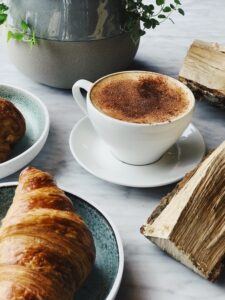
Can You Make An Espresso With Regular Coffee Beans?
It is certainly possible that you can make an Espresso with regular coffee beans provided they are of a dark roast, and you can grind them to a fine powder and are fresh. You must also have the required equipment to brew it.
Do Espresso Beans Have More Caffeine?
No,
this is going against what most people think about a shot of espresso. Since an espresso has more caffeine per ounce (or per ml) than any other coffee drink the logic is that espresso beans have more caffeine.
This is not the case. A shot of espresso has more caffeine due to a greater coffee to water ratio and being less “watered down”.
As a coffee bean moves up the roast levels it reduces in caffeine content.
Frequently Asked Questions About Are Espresso Beans Different?
Can You Use Regular Coffee Beans For Espresso?
No, you cannot use regular coffee beans for brewing an espresso. You need to use fresh coffee beans that are of a dark roast for the best results.
Are Espresso Beans Coffee Beans?
Yes,
espresso beans are coffee beans. The only difference is they have been roasted to a deeper and darker level. Anything less than fresh beans of a dark roast will not truly produce an espresso.
What Is The Difference Between Espresso Beans?
The biggest difference between, and some would say the only difference between espresso beans and other coffee beans is their roast level. They are roasted at a higher temperature and for slightly longer.
The result produces a different flavor profile and thicker, richer crema on top.
Can You Use Any Whole Bean For Espresso?
No,
for such a distinctive and important coffee, 2 out of 3 coffees brewed is an espresso, and is the base for much more espresso based milk drinks you need to use an espresso roast (AKA Italian roast) or at very least a dark roasted coffee such as a Vienna roast, City roast or French roast.
Don’t use a roast that is not a dark roast.
Are Espresso Beans Different Than Coffee Beans?
The only difference between espresso beans and regular coffee beans is the roast level. Espresso beans are roasted to a dark roast, more specifically a French roast and are only labeled as an espresso roast as they are ideal for this brew method.
Can You Use Any Beans As Espresso Beans?
Yes, as long as your beans are freshly roasted and of a dark roast. Without being freshly roasted or of a dark roast you will not get a thick rich crema on top.
Does The Type Of Bean Matter For Espresso?
If your goal is to make a high quality delicious espresso, you will need to use premium quality freshly roasted dark roast coffee beans. If you are using a lighter roast like a medium roast or beans that are not fresh, you will not get that same high-quality crema on top.
Fresh dark roasted beans are oily and produce a richer crema.
With regular quality beans you will not get an espresso that is as delicious as using premium quality beans.
Why Can You Eat Espresso Beans But Not Coffee Beans?
As you go up in the roasting levels the softer your coffee beans become and easier they are to bite. Espresso beans are highly roasted and softer than medium roasts, which may, quite literally, break your teeth!
Frappé-Ing It All Up – Are Espresso Beans Different?
If ever you are asked the question are espresso beans different you know that answer is yes and why.
It is important that you use a dark roasted coffee bean for an espresso and even more important when you are brewing any number of their milk based drinks as cutting through the milk is more difficult with any of the roast levels below a dark roast.
Join our cool coffee community and share your coffee recipes, creations and amazing latte art designs. Tell us all about the cool new beans you are trying out. Find us on Facebook/Meta.


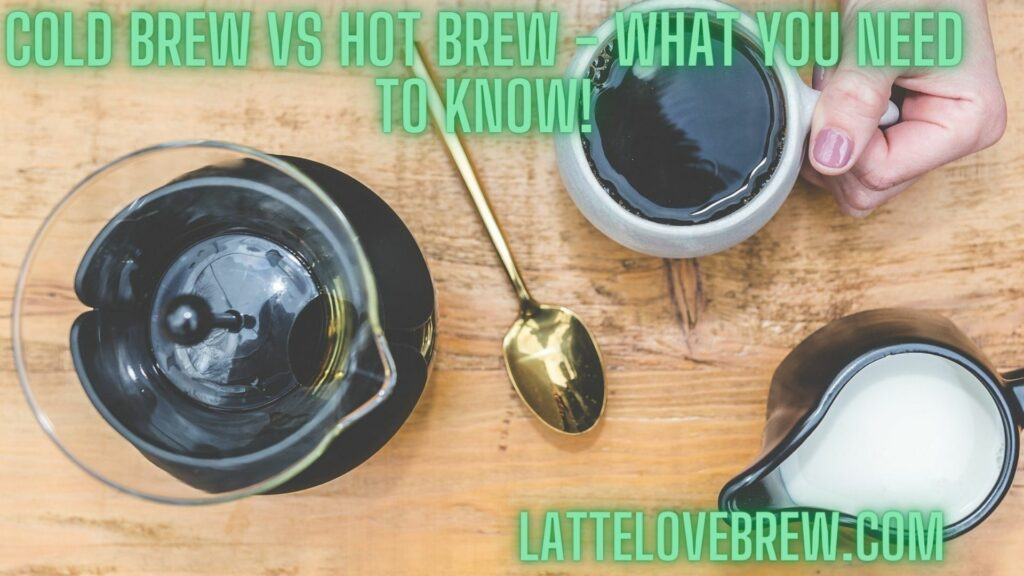


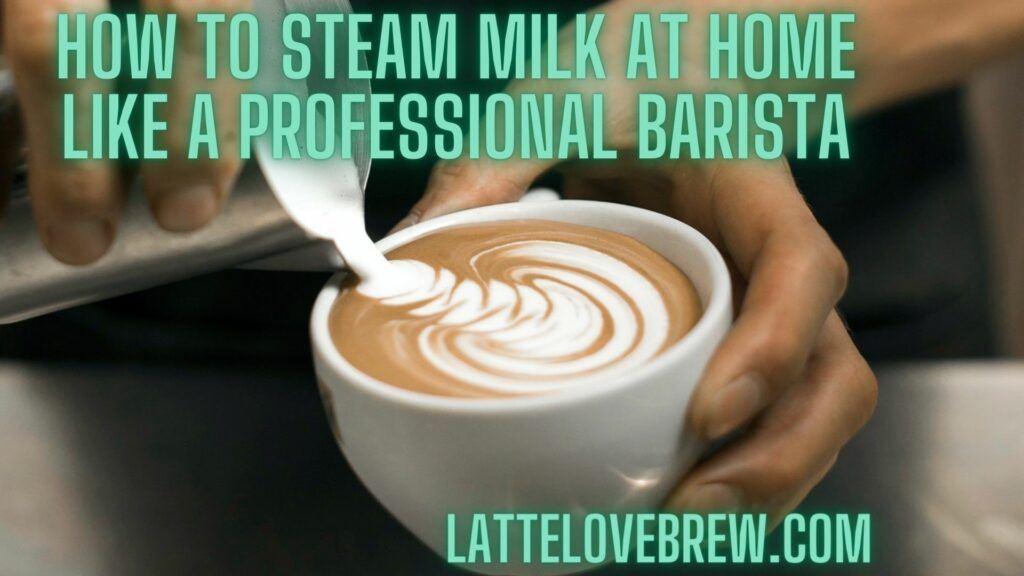
![[Recipe] How To Make Dunkin Iced Coffee At Home Like A Pro!](https://lattelovebrew.com/wp-content/uploads/2022/04/Recipe-How-To-Make-Dunkin-Iced-Coffee-At-Home-Like-A-Pro-1024x576.jpg)
